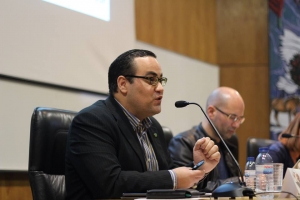Scotland: The next 100 days
Scotland was called to decide if it wanted to remain inside the United Kingdom or if they wanted to retake the independence path that they had until the Treaty of Union of 1707. 55% of the Scottish voters decided to keep the Union and rejected full-fledge independence. But the referendum will change, anyway, the power relation between London and Edinburgh. So what should Scotland do in the upcoming 100 days?
Negotiate
The crucial moment that ensured the victory of the “NO” campaign (lead by the pro-Westminster Unionists) was the promise of David Cameron, United Kingdom’s Prime Minister, that more powers were going to be given to Scotland. The time to negotiate is now, while the memories of the referendum are still warm in London.
Leaders of the Scottish National Party (SNP) have a narrow gap to advance their claims towards more power in what regards politics, education and social rights. Economy, for the moment, should be left aside, although the SNP leaders could propose the right to fully control their own tax-revenues in exchange for less budget coming from London.
In terms of politics, Scotland can now claim a greater predominance of regional laws over national laws and can now begin the federalization of the United Kingdom. In education, Scotland needs to ensure full autonomy to set school programs especially in three areas: Language, History and Literature. Scotland should also be able to establish educational protocols with other countries without the need of a stamp from London.
Pacify
Alex Salmond accepting defeat of the referendum dismissed himself as leader of the SNP, but the wounds opened by the referendum need now to begin healing. Both campaigns used, at some point, fear to prevent voters to go “to the other side”. After the referendum there is a need for Scottish people to comprehend (and accept!) who voted what and why. Queen Elizabeth II asked for a time for unity, but before unity there is a need to achieve comprehension.
Joint-sessions to share experiences and ideals between the “NO” and “YES” campaigners would minimize social tension that might arise in the upcoming weeks. Even if the referendum was incredibly peaceful, we cannot disregard the intensity of questions about shared identities and so there is a need to reach some sort of national catharsis in Scotland. The idea is not just to move on, but to understand why and where to move on and how to do it together. Local leaders and activists will be essential in this task.
Deepen
Scotland needs to learn how to empower its diaspora not only to promote its country but also to be a political leverage on domestic affairs, at the United Kingdom level. The Jewish and Armenian communities have proven to be quite resourceful in this way, using diaspora in a bi-way: internal leverage and external public relations. Circassians, advocating for the re-establishment of their state in the North Caucasus, are also showing up their skills in soft diplomacy via diaspora.
The Scottish diaspora needs to deepen its roots on the local communities in which they live and to use those contacts to advance the Scottish agenda. Because if, at some point, Scotland gets independent, Scotland will need allies and no one is in a better position to raise those allies than the Scottish people across the diaspora.
Publicize
Scotland’s referendum got the attention of several political players across Europe. From leaders of independentist movements, to leaders of central governments, to the politicians walking in the Euro-corridors of Brussels all stick their faces to watch the referendum unfolding. Now it is time for Scotland to publicize this “Scottish model” of agreed democratic referendums between the center and the periphery.
Scotland’s referendum was not the first of its kind, Quebec already did two of these referendums, but Scotland got greater publicity and it’s now fresher in everybody’s minds. Scottish scholars need to develop a theoretical framework and to publish books, articles, analysis on this “Scottish model” of agreed democratic referendum, that will serve as guide to other regions in the globe that also aim for independence.
By publicizing its model, Scotland can gain international recognition and new allies that might be worthy in the future. The model needs, however, to stress out the need for an agreement with central authorities to avoid tensions like in Catalonia (Spain), Flanders (Belgium), Corsica (France) and Venice (Italy).
Prepare
Like all matches, Scotland’s referendum is only half-way through. But if the SNP wants to go back the referendum road, in ten to twenty years from now, this is the moment to begin preparation. Education is the key component here: a strong curriculum based on Scottish history, folklore and values will ensure greater acceptance of the independentist project amongst the younger generations.
Scotland’s second turn on the referendum might surprise London, if we take as an example the case of Quebec that in the second round only failed to achieve independence by a narrow margin lower than 1%. But to win the hearts of the pro-Unionists and the undecided, the pro-independence need to begin working today on a long-term plan to re-ignite the independence question in ten to twenty years.



